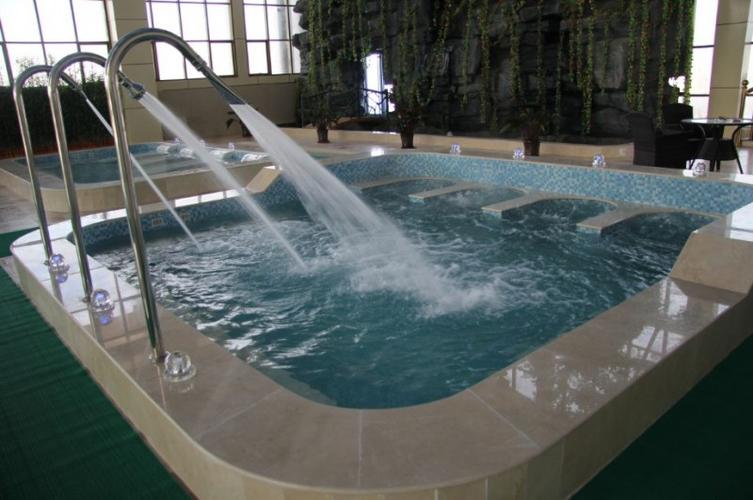- 本文目录导读:
- 养生文化 (Wellness Culture)
- 养生教育 (Wellness Education)
- The Integration of Culture and Education for Enhanced Wellness
- Practical Steps to Embrace Wellness Culture and Education
In today's fast-paced world, the concept of wellness has taken center stage as people strive to achieve a balanced and healthy lifestyle. The intertwining of health practices, cultural traditions, and educational initiatives form the backbone of what is commonly referred to as "养生" (Yang Sheng) in Chinese. This term, which literally translates to "nurturing life," encompasses a broad spectrum of practices aimed at maintaining health, preventing illness, and prolonging life. This article delves into the importance of 养生文化与教育 (wellness culture and education), exploring how these elements contribute to an improved quality of life.
养生文化 (Wellness Culture)
养生文化 refers to the rich traditions and practices developed over centuries, particularly in Chinese culture, to promote health and longevity. These practices are deeply rooted in the philosophies of Daoism, Confucianism, and traditional Chinese medicine (TCM). The essence of 养生文化 lies in the harmony between body and mind, the balance of Yin and Yang, and the integration of humans with nature.
One of the core aspects of 养生文化 is diet. Traditional Chinese dietary practices emphasize the importance of balance and moderation. Foods are classified according to their energetic properties—hot, warm, neutral, cool, and cold—and are consumed to balance the body's internal energies. For example, during winter, when the environment is cold, warm and hot foods like ginger and lamb are recommended to keep the body warm. This dietary approach not only nourishes the body but also prevents illnesses that could arise from imbalances.
Physical activity is another crucial component. Tai Chi and Qigong are traditional exercises that embody the principles of 养生文化. These practices emphasize slow, deliberate movements, controlled breathing, and mental focus, aiming to enhance the flow of Qi (vital energy) throughout the body. Regular practice of Tai Chi or Qigong improves flexibility, balance, and overall physical and mental well-being.
Herbal medicine is also integral to 养生文化. Traditional Chinese medicine utilizes a wide array of herbs to prevent and treat illnesses, enhance immunity, and promote longevity. Ginseng, goji berries, and astragalus are just a few examples of herbs commonly used in TCM to boost vitality and overall health.
养生教育 (Wellness Education)
养生教育 plays a pivotal role in disseminating the principles and practices of wellness culture. Education empowers individuals with the knowledge and skills needed to adopt a healthier lifestyle. This process starts at an early age and continues throughout life, adapting to different life stages and health needs.
Incorporating 养生教育 into the school curriculum is one effective way to instill healthy habits in young minds. Schools can introduce subjects related to nutrition, physical activity, mental health, and traditional wellness practices. Interactive and engaging methods such as cooking classes, gardening projects, and Tai Chi sessions can make learning about wellness fun and impactful.

Public health campaigns are another vital aspect of 养生教育. Governments and health organizations can promote wellness through various media, offering tips on balanced diets, exercise routines, and stress management techniques. Workshops, seminars, and community programs can also provide practical guidance and support for adopting healthy lifestyles.
Healthcare professionals play a critical role in 养生教育 as well. Doctors, nutritionists, and fitness experts can offer personalized advice and support, helping individuals make informed decisions about their health. Integrating traditional and modern medical practices can provide a comprehensive approach to health and wellness.
The Integration of Culture and Education for Enhanced Wellness
The synergy between 养生文化与教育 is essential for fostering a holistic approach to health. Cultural traditions offer time-tested practices that have been proven effective over centuries, while modern education provides the platform to disseminate this knowledge widely and effectively.
Incorporating cultural elements into wellness education can make the learning experience more relatable and impactful. For instance, teaching the energetic properties of foods alongside modern nutritional science can offer a more comprehensive understanding of diet and health. Similarly, integrating practices like Tai Chi into physical education programs can enhance students' physical and mental well-being.
Furthermore, adopting a holistic approach to wellness that includes both traditional and modern practices can address the diverse health needs of individuals. While modern medicine excels in treating acute illnesses and injuries, traditional practices can be highly effective in preventive care and chronic disease management. This complementary approach ensures a more balanced and comprehensive healthcare system.
Practical Steps to Embrace Wellness Culture and Education
To fully benefit from 养生文化与教育, individuals can take several practical steps:
1. **Educate Yourself**: Learn about the principles of traditional wellness practices and modern health science. Read books, attend workshops, and seek advice from healthcare professionals.
2. **Balanced Diet**: Adopt a diet that includes a variety of foods with different energetic properties. Pay attention to seasonal changes and adjust your diet accordingly.

3. **Regular Exercise**: Incorporate physical activities like Tai Chi, Qigong, or yoga into your routine. These practices not only improve physical health but also enhance mental clarity and emotional stability.
4. **Mind-Body Harmony**: Practice mindfulness and stress management techniques. Meditation, deep breathing exercises, and adequate rest are essential for maintaining a balanced and healthy life.
5. **Herbal Remedies**: Explore the benefits of traditional herbal medicine. Consult with a qualified practitioner to ensure safe and effective use of herbs.
6. **Community Engagement**: Participate in community wellness programs and initiatives. Engaging with others can provide support, motivation, and a sense of belonging.
7. **Lifelong Learning**: Wellness is a lifelong journey. Stay informed about new developments in health and wellness, and be open to adapting your practices as needed.
In conclusion, the integration of 养生文化与教育 offers a comprehensive and holistic approach to health and well-being. By embracing the wisdom of traditional practices and the advancements of modern education, individuals can enhance their quality of life, prevent illnesses, and achieve a state of balanced wellness. The journey to wellness is continuous, but with the right knowledge and practices, it can be a fulfilling and enriching experience.
版权声明
本文仅代表作者观点,不代表成都休闲网立场。
本文系作者授权发表,未经许可,不得转载。

























